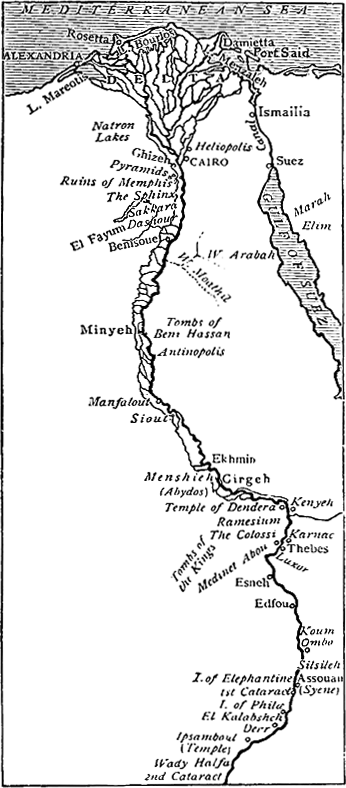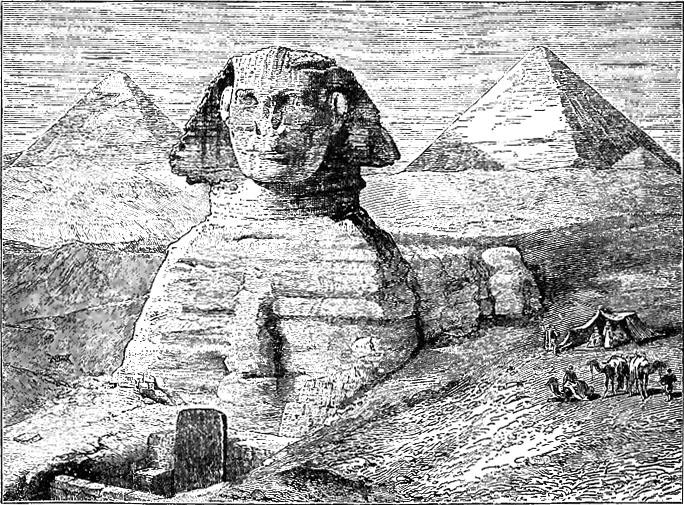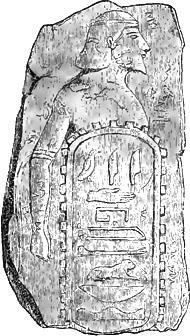Egypt—the land of the Nile and the pyramids, the oldest kingdom of which we have any record, holds a place of great significance in Scripture. Its Hebrew name is Mizraim; a dual form, pointing to the two divisions of the country, Upper and Lower Egypt, or, as some think, the two strips of fertile land on the two sides of the Nile. The common Coptic name of the country is Kerne or Kam (i.e., “the black land”), with reference to the colour of the soil. It is called also “the land of Ham” (Ps. 105:23, 27; comp. 78:51), and “Rahab” (87:4; 89:10, etc.). The origin of the name “Egypt,” first met with in its Greek form in Homer, is unknown. It is supposed to mean “the land of the Copts.”
Herodotus has called Egypt “the gift of the Nile.” But for that river, it would have been a barren desert. From year to year, with wonderful regularity, the Nile begins to rise about the middle of July, attaining its greatest height in the end of September or beginning of October, when it begins, at first slowly, and afterwards more rapidly, to fall, till it reaches its lowest level in April or May. When at its height its waters spread over the whole valley, covering it with a black sediment which enriches the soil. This is soon covered with all manner of luxuriant crops.
Egypt is a great oasis, extending from where the Nile issues from the granite rocks of the Eirst Cataract in a direct line to the Mediterranean, a distance of about 600 miles. This is divided into two parts. (1.) The Delta (so called from its resembling in form the Greek letter delta, Δ) is a large triangular plain, extending along the Mediterranean coast for about 200 miles, and up the Nile for 100 miles. (2.) From this point of the Nile to the First Cataract, a distance of about 500 miles, is the Nile valley, which ranges in breadth from 10 to 30 miles. The Delta and the Nile valley have together an area of about 9,600 square miles. Modern Egypt is, however, much more extensive. It is bounded on the north by the Mediterranean, on the south by Nubia, on the east by the Red Sea, and on the west by the Great Desert.

THE NILE VALLEY.
Egypt is of chief interest to us from its place in Bible history. It was colonized at a very early period by the descendants of Mizraim, the second son of Ham, who probably came from the east along the Persian Gulf, then across Northern Arabia and the isthmus of Suez. It was an old, flourishing, and settled kingdom in the time of Abraham. “The first Egyptian monarchy had had its seat at Memphis ages before Jacob’s day; and the kings of the Old Empire who flourished there had left monuments of their greatness which were old in the times of the patriarchs, and still astonish the world. Huge dikes like those of Holland were made by them to keep the Nile from flooding the cities, which themselves were built on artificial mounds raised high above the level of the annual inundations. The turquoise mines of the Sinai peninsula had been discovered, and were vigorously worked. The forced labour of tens of thousands had built the gigantic masses of the pyramids of limestone from the quarries of the neighbouring Arabian hills, cased with huge blocks of granite from Assouan at the First Cataract far up the river, wonderfully polished, and cut with an exactness which modern skill still envies.”—Geikie’s Hours, etc., ii. 6.

SPHINX AND PYRAMIDS.
The Old Empire founded by Menes at length came to an end, and was succeeded by the Middle Empire, the seat of government being shifted from Memphis to Thebes. After a short period the Hyksôs or shepherd-kings successfully invaded the land, and fixed their capital at Zoan (q.v.). The Hyksôs were ultimately expelled by Aahmes, or, as he is sometimes called, Amosis, the first king of the eighteenth dynasty of purely Egyptian kings.
The nineteenth dynasty was founded by Seti I., the “king which knew not Joseph.” He was succeeded by his son, the great Rameses II. (See Pharaoh.)
In the year b.c. 343 the Persians under Cambyses conquered the country, and after them the Greeks (b.c. 332) under Alexander ruled over it, and Egypt became a Greek kingdom. For the space of three hundred years the Ptolemies, the successors of Alexander, swayed the sceptre over the valley of the Nile, and the country flourished in all the arts of agriculture and commerce. After the battle of Actium in 30 a.d., Egypt became a Roman province, and on the division of the Roman empire (a.d. 337), it fell to the lot of Constantinople. In 638 a.d. it was subdued by the Moslems, and in 1517 by the Turks. It remains to this day nominally a part of the Turkish empire.
When Abraham and Sarah went down into Egypt (b.c. 1920) it was ruled by Hyksôs monarchs, who held their court at Zoan, and the king then on the throne bore the Egyptian title of Pharaoh. The inhabitants spoke the Semitic language, so that Abraham could converse with them. The history of Joseph (q.v.) begins a connection with Egypt full of momentous consequences for the descendants of the patriarch. Jacob and his family are at length brought down into Egypt, and have their dwellings in the land of Goshen (q.v.), where they “grew and multiplied exceedingly.” The sacred narrative (Ex. 1:8, 14, etc.) reveals the oppression and cruel bondage to which the Hebrews were subjected, probably under Rameses II. (Sesostris of the Greeks), “Pharaoh of the oppression,” and the wonderful interpositions of God in their behalf.
Egypt is the “monumental land of the earth,” “the land of wonders.” Its natural features and its history are alike extraordinary. Its ruined cities and palaces and temples, its pyramids and its obelisks, and its hieroglyphics, which scholars can now read and interpret, make it, of all countries in the world, full of profound interest to the antiquary and to the student of the Bible, which receives numberless confirmations from the facts it now lays open to view.

STONE WITH HIEROGLYPHICS.
A number of remarkable clay tablets, discovered at Tell-el-Amarna in Upper Egypt, are the most important historical records ever found in connection with the Bible. They most fully confirm the historical statements of the Book of Joshua, and prove the antiquity of civilization in Syria and Palestine. As the clay in different parts of Palestine differs, it has been found possible by the clay alone to decide where the tablets come from when the name of the writer is lost. The inscriptions are cuneiform, and in the Aramaic language, resembling Assyrian. The writers are Phoenicians, Amorites, and Philistines, but in no instance Hittites, though Hittites are mentioned. The tablets consist of official dispatches and letters, dating from 1480, addressed to the two Pharaohs, Amenophis III. and IV., the last of this dynasty, from the kings and governors of Phoenicia and Palestine. There occur the names of three kings killed by Joshua, Adoni-zedec, king of Jerusalem, Japhia, king of Lachish (Josh. 10:3), and Jabin, king of Hazor (11:1); also the Hebrews (Abiri) are said to have come from the desert.
The principal prophecies of Scripture regarding Egypt are these, Isa. 19; Jer. 43:8–13; 44:30; 46; Ezek. 29–32; and it might be easily shown that they have all been remarkably fulfilled. For example, the singular disappearance of Noph (i.e., Memphis) is a fulfilment of Jer. 46:19, Ezek. 30:13.

|
About Easton’s Bible DictionaryEaston’s Bible Dictionary provides informative explanations of histories, people and customs of the Bible. An excellent and readily understandable source of information for the student and layperson. One of Matthew George Easton’s most significant literary achievements. |
| Support Info | eastons |
 Loading…
Loading…